Thomas Paturet
On Ashes
2015
FUNERAL COMPLEX
“Demain, dès l’aube, à l’heure où blanchit la campagne, je partirai. Vois-tu, je sais que tu m’attends. […] Et quand j’arriverai, je mettrai sur ta tombe Un bouquet de houx vert et de bruyère en fleur.”
— Demain, Dès l’aube, Victor Hugo
The death care industry is one of discretion. Often forgotten or purposely ignored as an industry. Cremation—the act of burning a corpse to ashes—is one of the most popular funerary methods. In a world where lack of space is often an issue, and cemeteries feel increasingly pressured by urban expansion, cremation offers a flexible and concrete alternative. In Europe, this trend has given rise to countless architecture projects that seek to update and modernize the industry. The death care industry is not an industry of profits, margins or board-meetings. It is an industry of simple transformation. Surrounded with respect and guidance, architectural design is a crucial part of the process. It is often financed by the state, interested in securing low prices and high quality care. Today, Iceland is equipped with only one crematorium. Like a vast majority of the country’s infrastructure, it is located in Reykjavík. With a growing population, and thus an increasing need for such infrastructures, Iceland will need to find alternative solutions. At first glance, the obvious location would indeed be Reykjavík, but after closer analysis, the general trend seems to tell a different story: most of the demographic growth is concentrated in the southern regions of Iceland, where there are good connections with the capital and the most favourable weather conditions. These regions and their inhabitants will soon need access to new death care infrastructure.
The chosen site for this project is the island of Dyrhólaey, located at the southernmost point of Iceland. Besides its island condition, this quite particular site contains all the geological elements that characterize Iceland: its soil is made out of solid, black basalt rock, a material that was pushed out of the earth by volcanic eruptions and forged by years of glacial formations and movement. In itself, this island is already an emblem of transformation. Weather conditions are mild and the island is easily accessible, neighbouring one of the main urban centres of the south, Vík. It is publicly accessible for a vast majority of the year, but becomes closed off for a couple of months in the spring due to birds nesting onsite. Human access is a major issue currently straining the island’s resources. By establishing a funeral complex there, on a specific location where there are no nests, we can control access to the island and limit visits to designated footpaths. The projected funeral complex includes a crematorium, a ceremony chapel, a cemetery and greenhouses (in order to provide flowers for the crematorium’s diverse activities). As stated above, the island, a natural reserve, is now entirely closed to vehicles and can only be accessed by foot. The tourists will have to park at the entrance of the island, where a visitor centre will be built in order to provide information on the island’s ecosystem and geology. The bird population inhabiting the island in springtime will be free from any tourism activities during this period. A new road is created a few kilometres ahead of the island in order to divert the traffic away from the main touristic road. This road, parallel to a small lake, leads to the foot of the building, where an elevator takes visitors and users directly to the top of the complex. Tourists who visit the island have no access to the complex and can only see a small portion of its façade, with an unconcealed view towards the glacier beyond. The complex itself has no impact on the existent tourist or wildlife attractions.
The project is characterized by a 96.57 metre high tower that contains all the core necessities of the complex. It also holds the main circulation structure. The vertical circulation enables an efficient distribution of the different spaces. Public users benefit from a dedicated elevator, which can hold up to 30 people. The public has access to the last two floors, where the funeral parlour and the administration/reception spaces are. The funeral parlour is open around the clock (24 hours, seven days a week) and can work independently from the rest of the complex (having its own access to the cemetery). The staff has access to two independent and dedicated elevators that can hold up to two coffins each. There are no hallways in the complex. The circulation is efficient and the distance always minimal between the different sectors. On the front side of the building, one can see the main staircase: it enables people coming back from the ceremony or the cemetery to use a more peaceful descent space that benefits from a view towards the sea and the glacier. The complex is nested within the cliff. There is a distance of 1.20 metres between the structure and the cliff. This enables the creation of maintenance paths and a natural ventilation system for the inner spaces. The site is thus excavated at three different levels and concrete slabs are then placed on top of the bare basalt rock. The rest of the cliff is left exposed and can be contemplated from the complex. The structure is composed of T-shaped prefabricated concrete pillars stacked on top of each other. The wall filling between these pillars is made up of black basalt rock panels gathered onsite during the excavations. The structure gets thinner with height, with the upper level pillars being 10 centimetres thick. The complex is 252.1 metres long and 10 metres wide. It is purposely designed to remind one of a cathedral, characterized by powerful spaces where the view on the surroundings is controlled and limited to give prominence to the inner spaces.
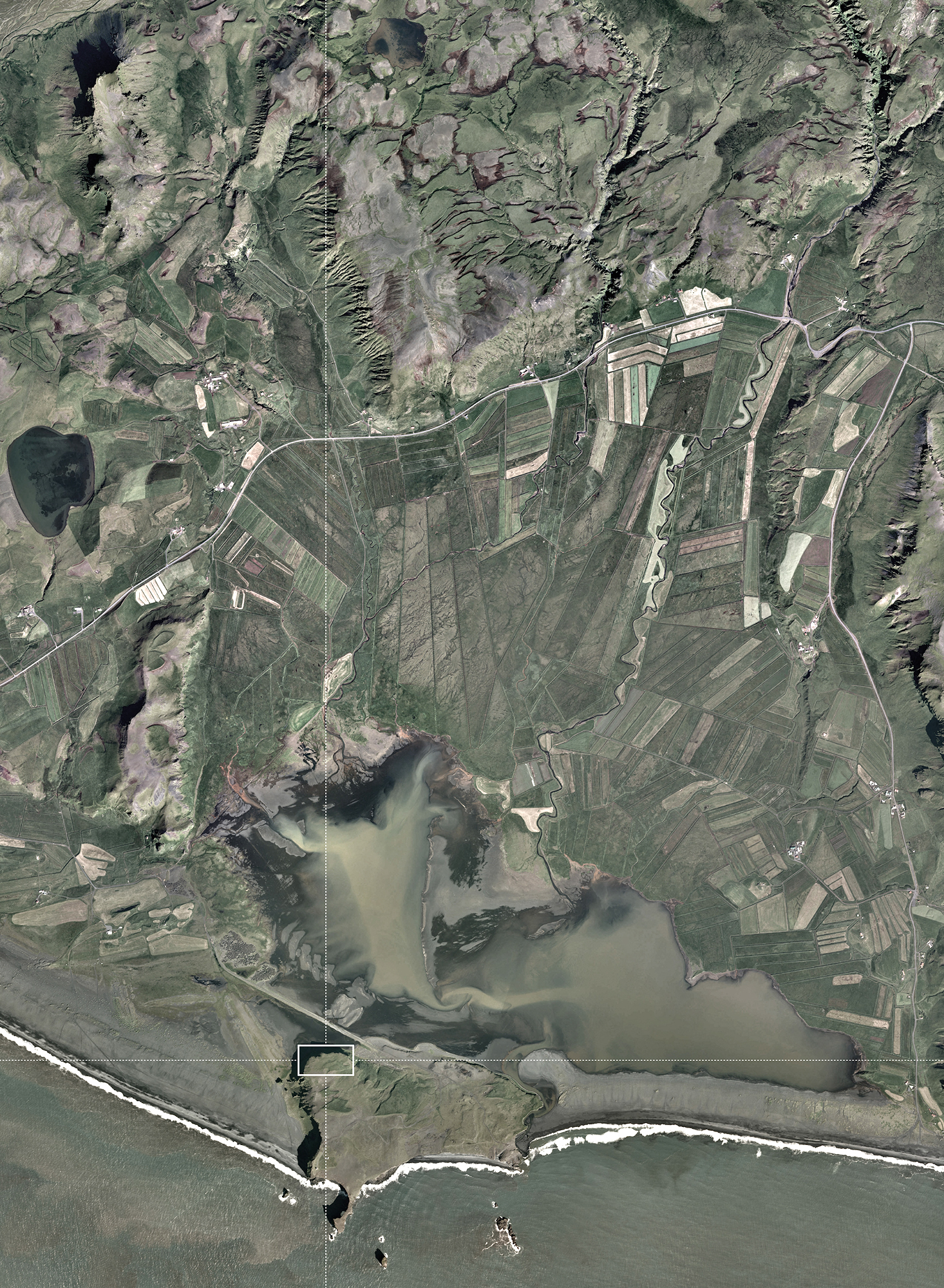
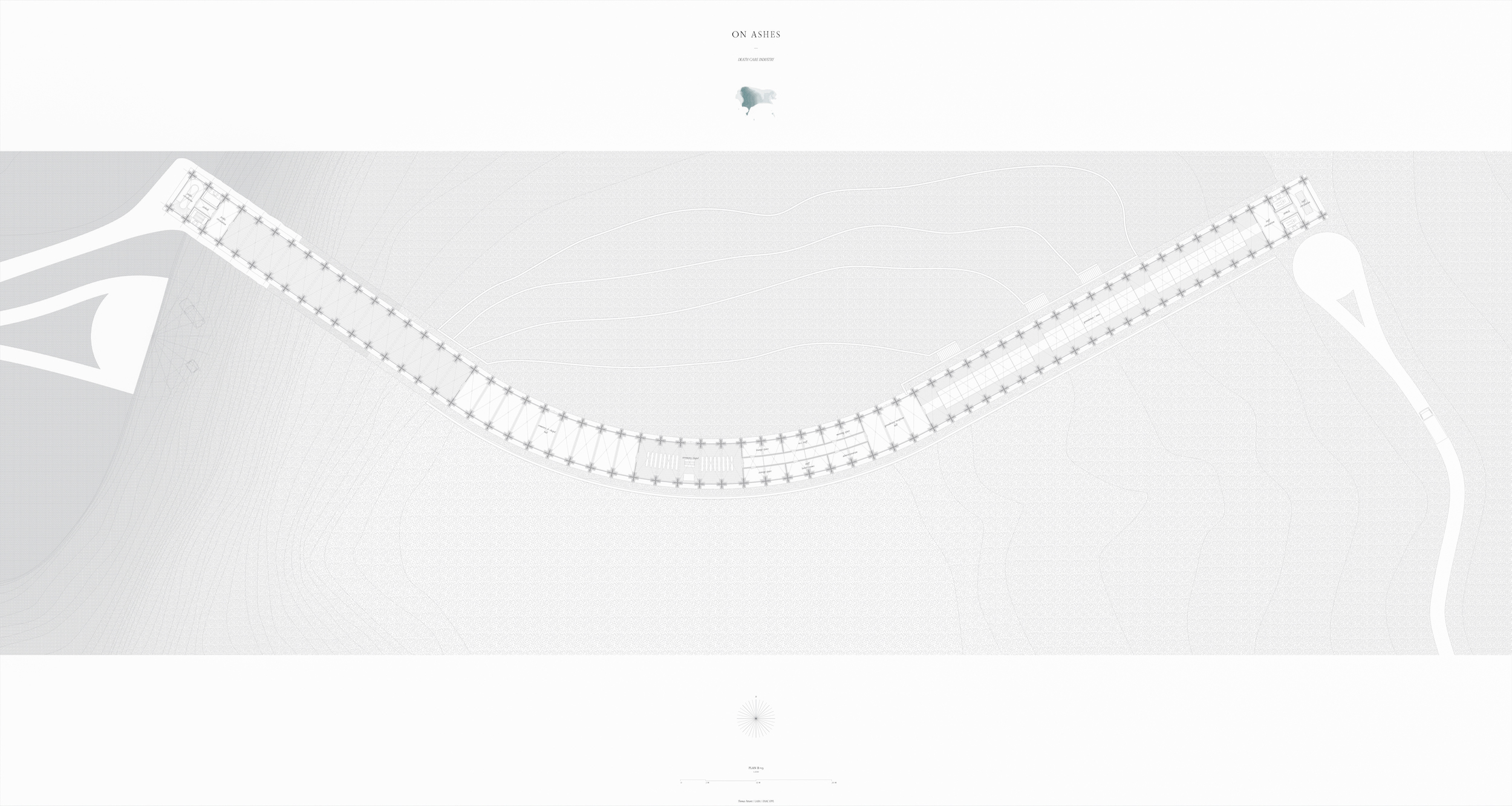
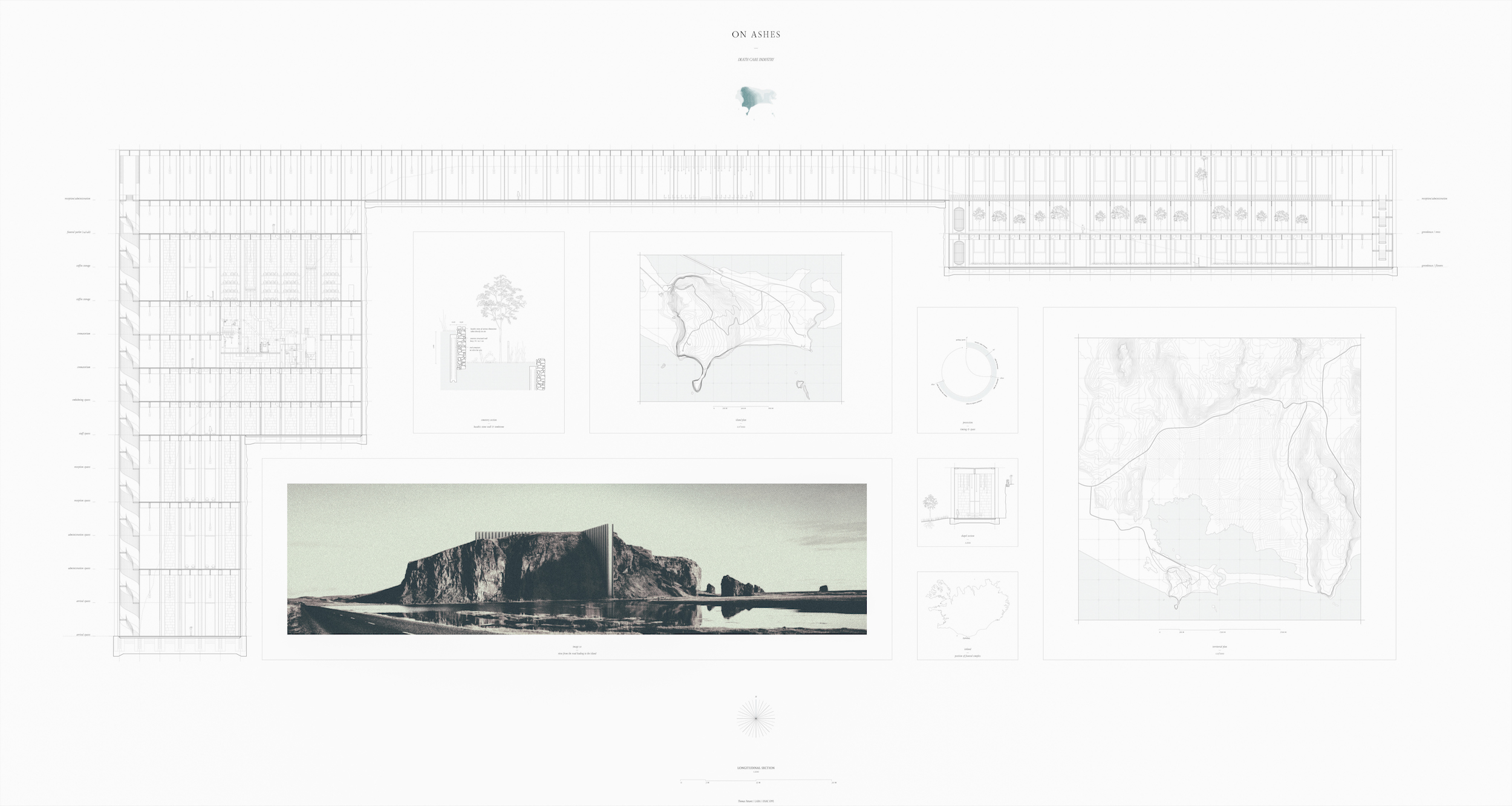
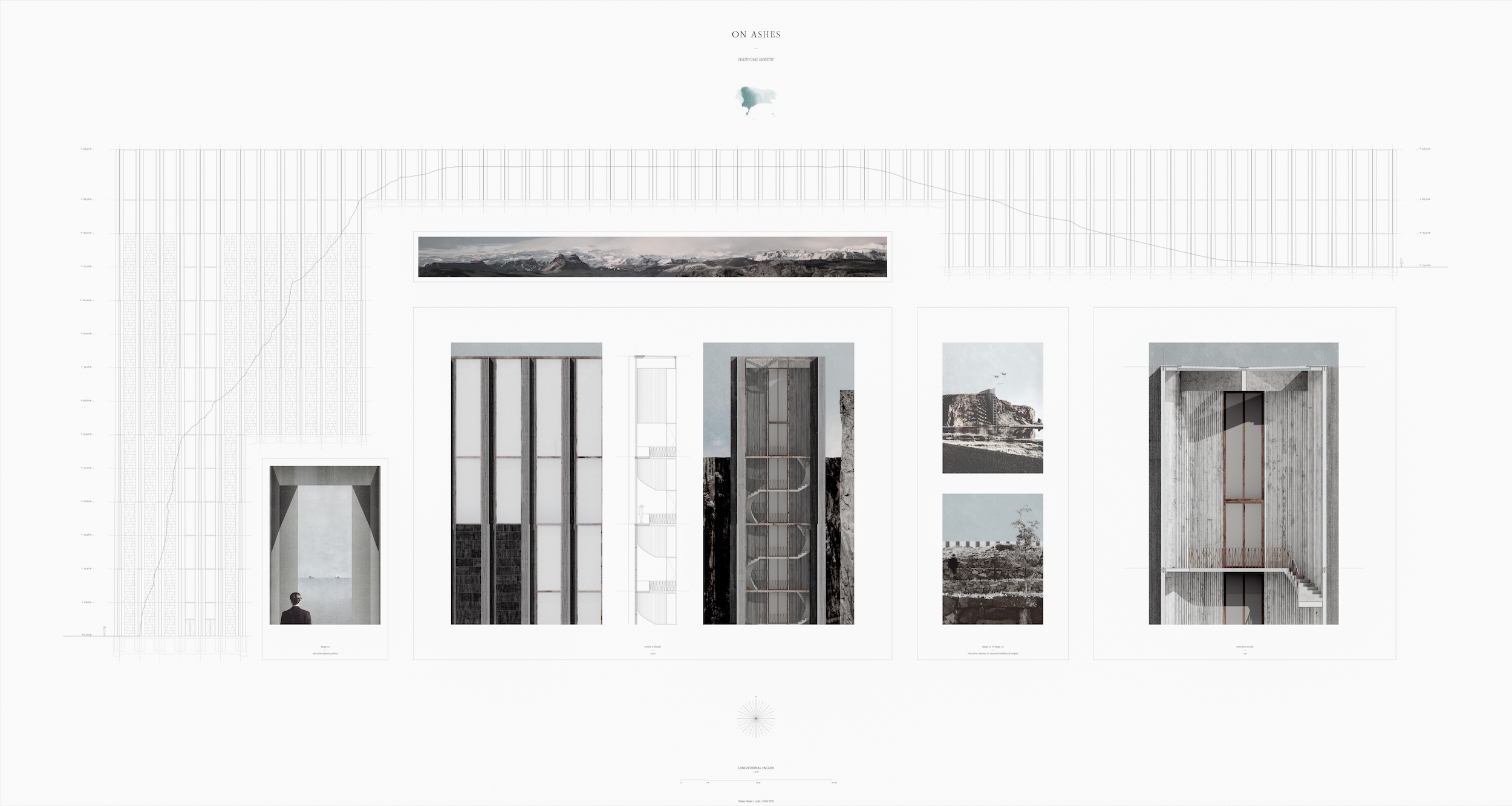
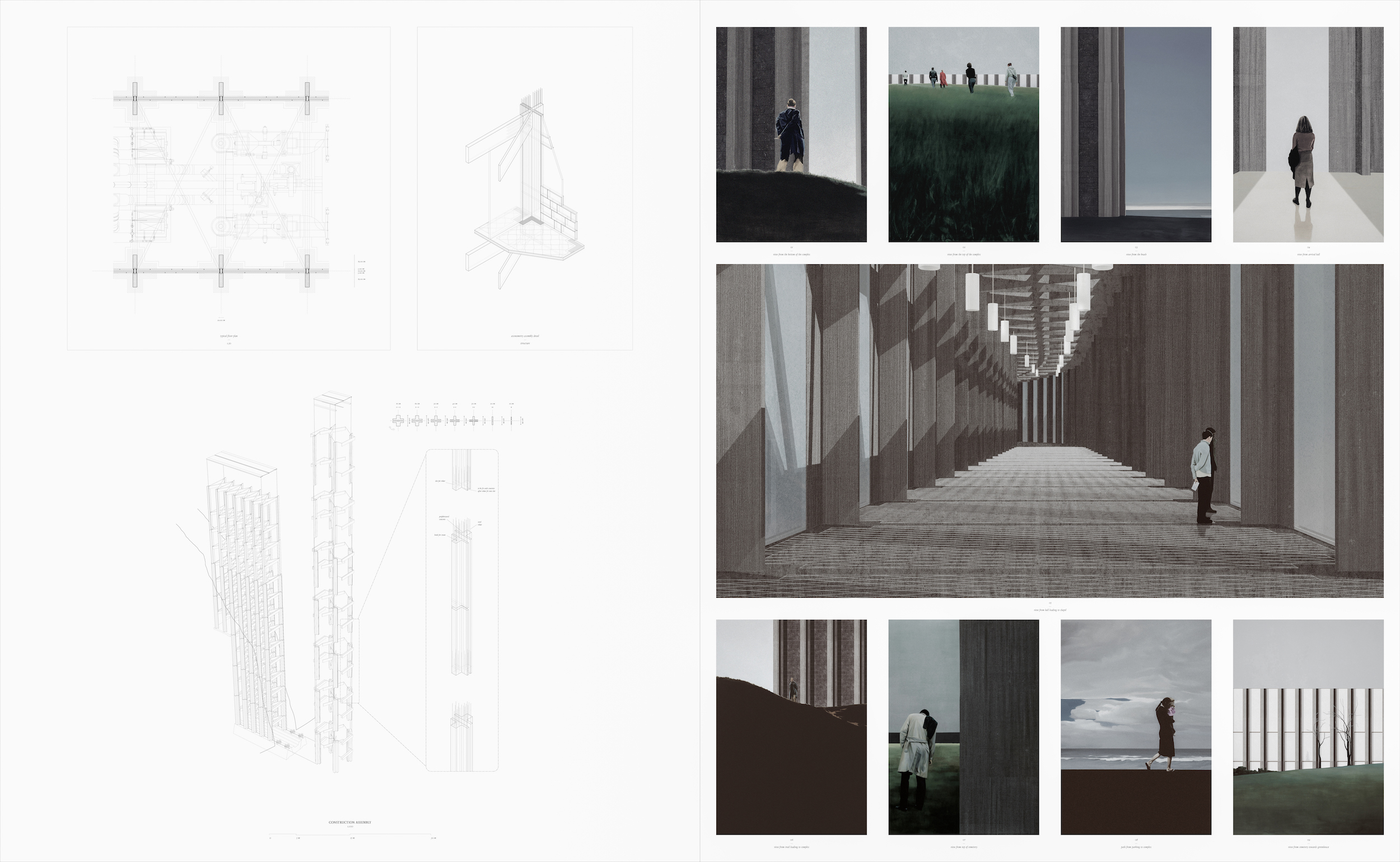
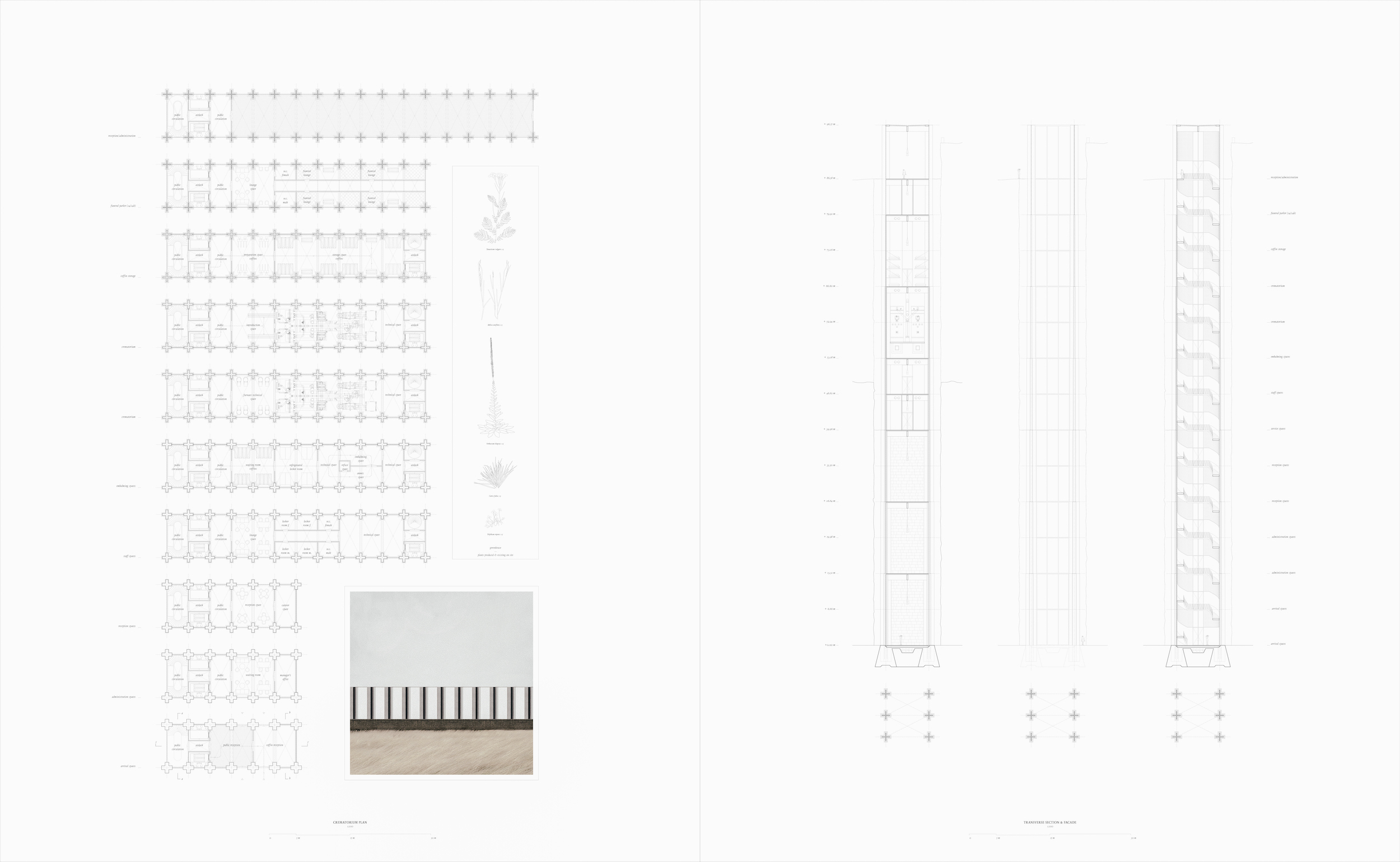
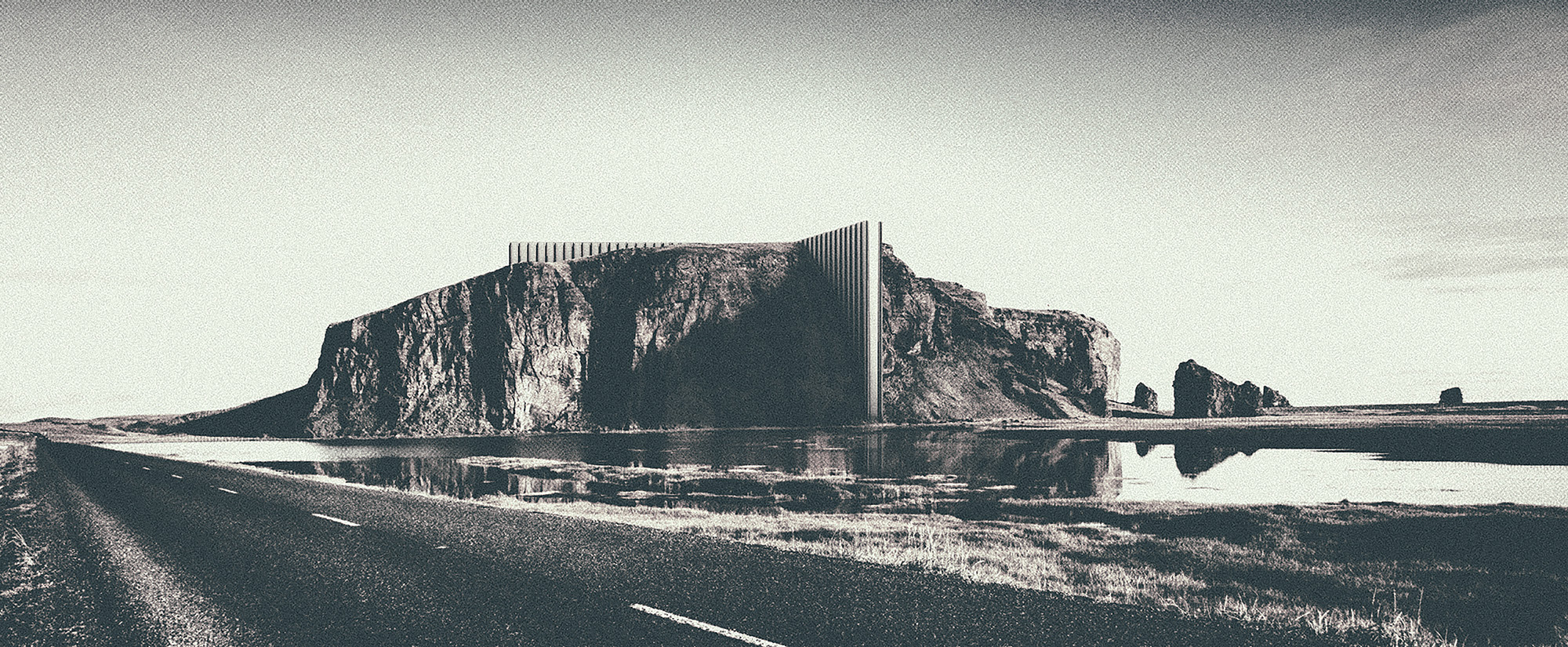
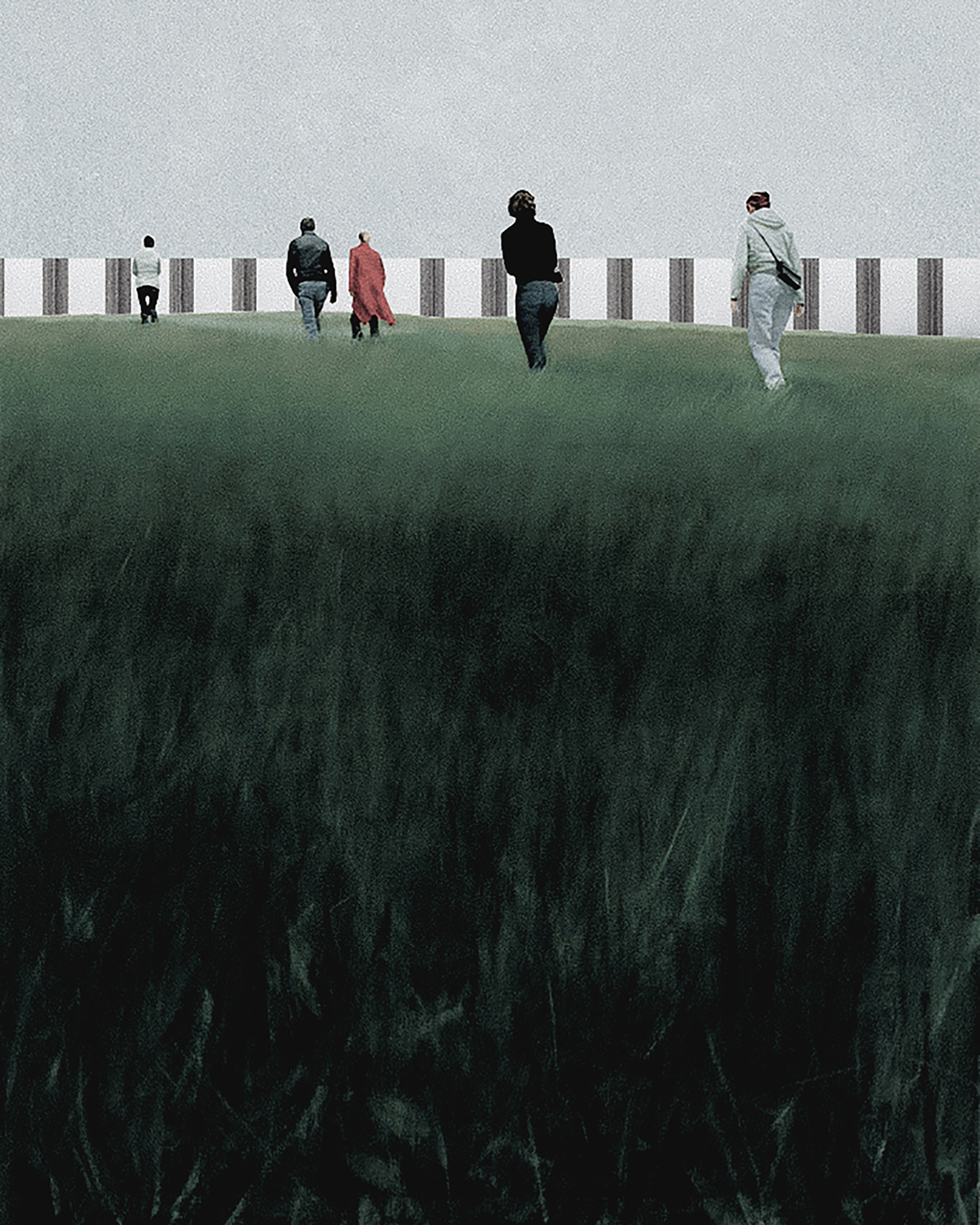
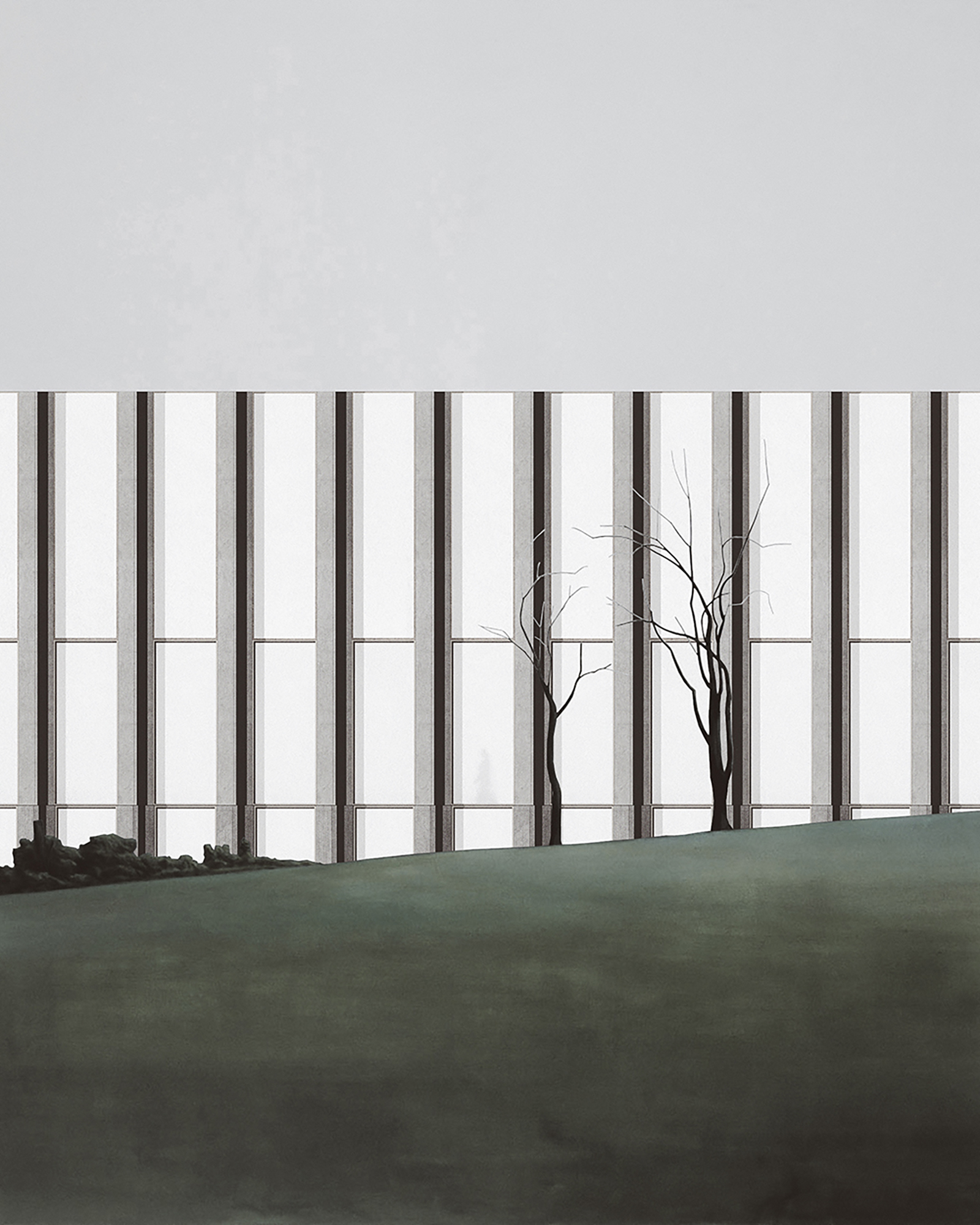
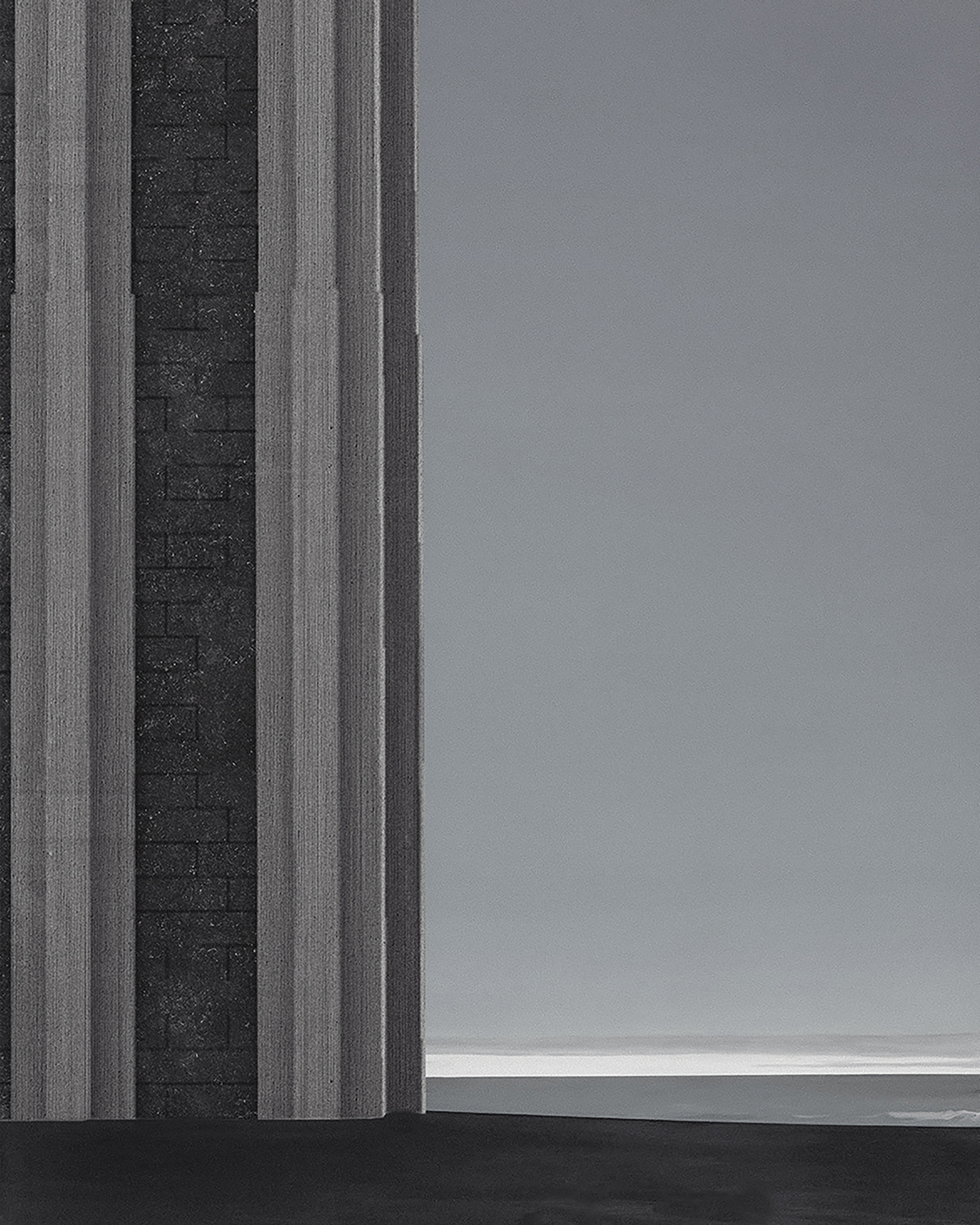
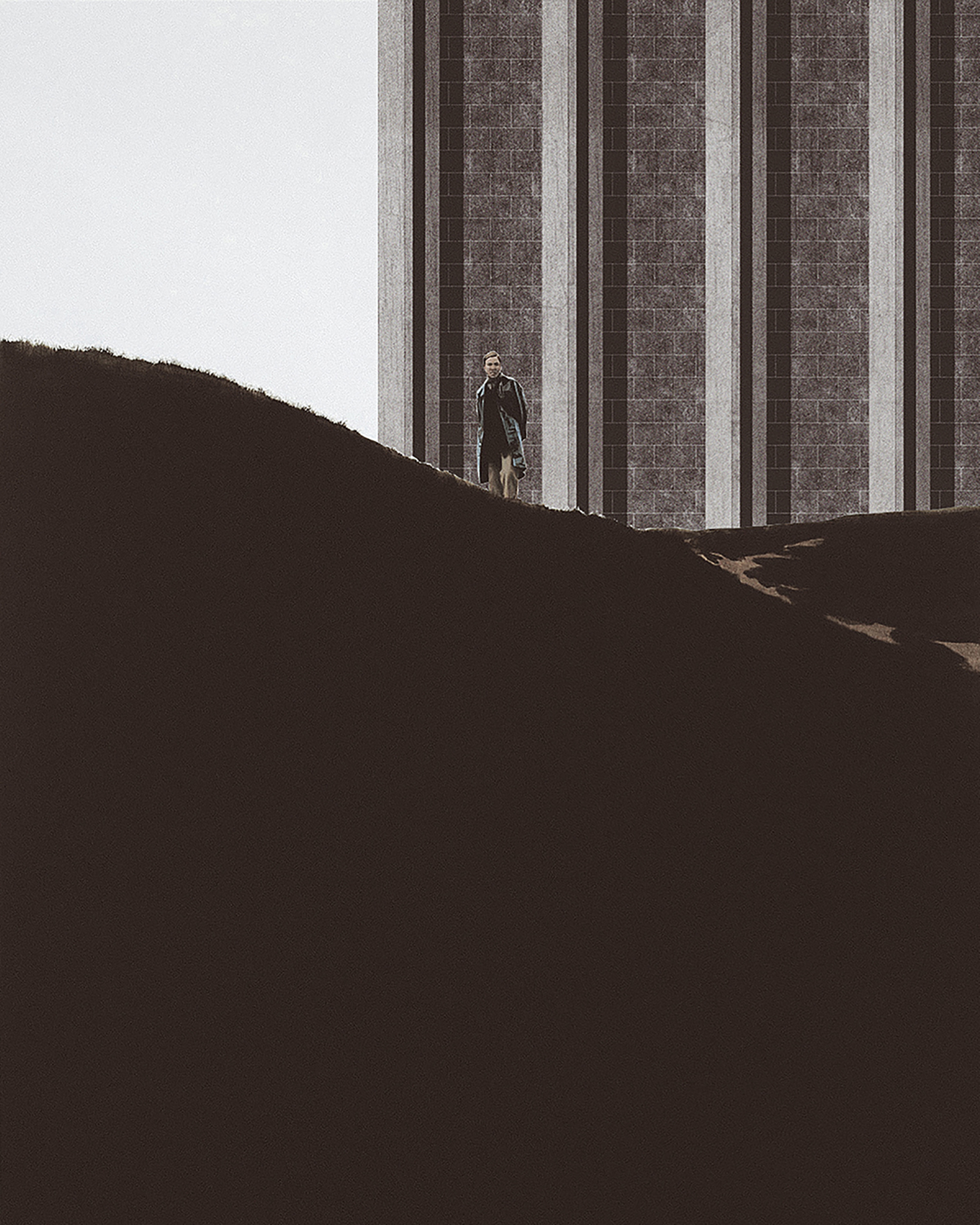
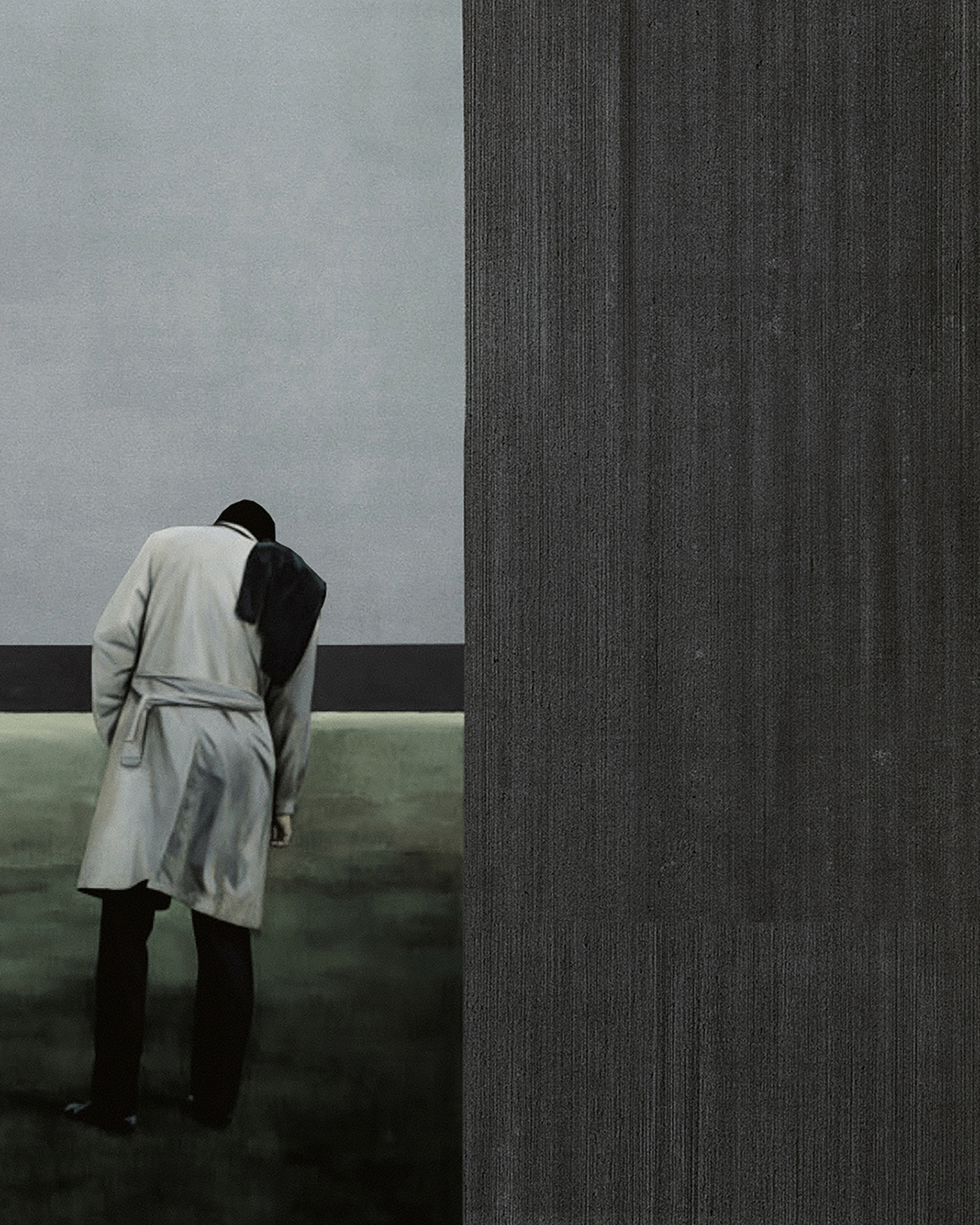

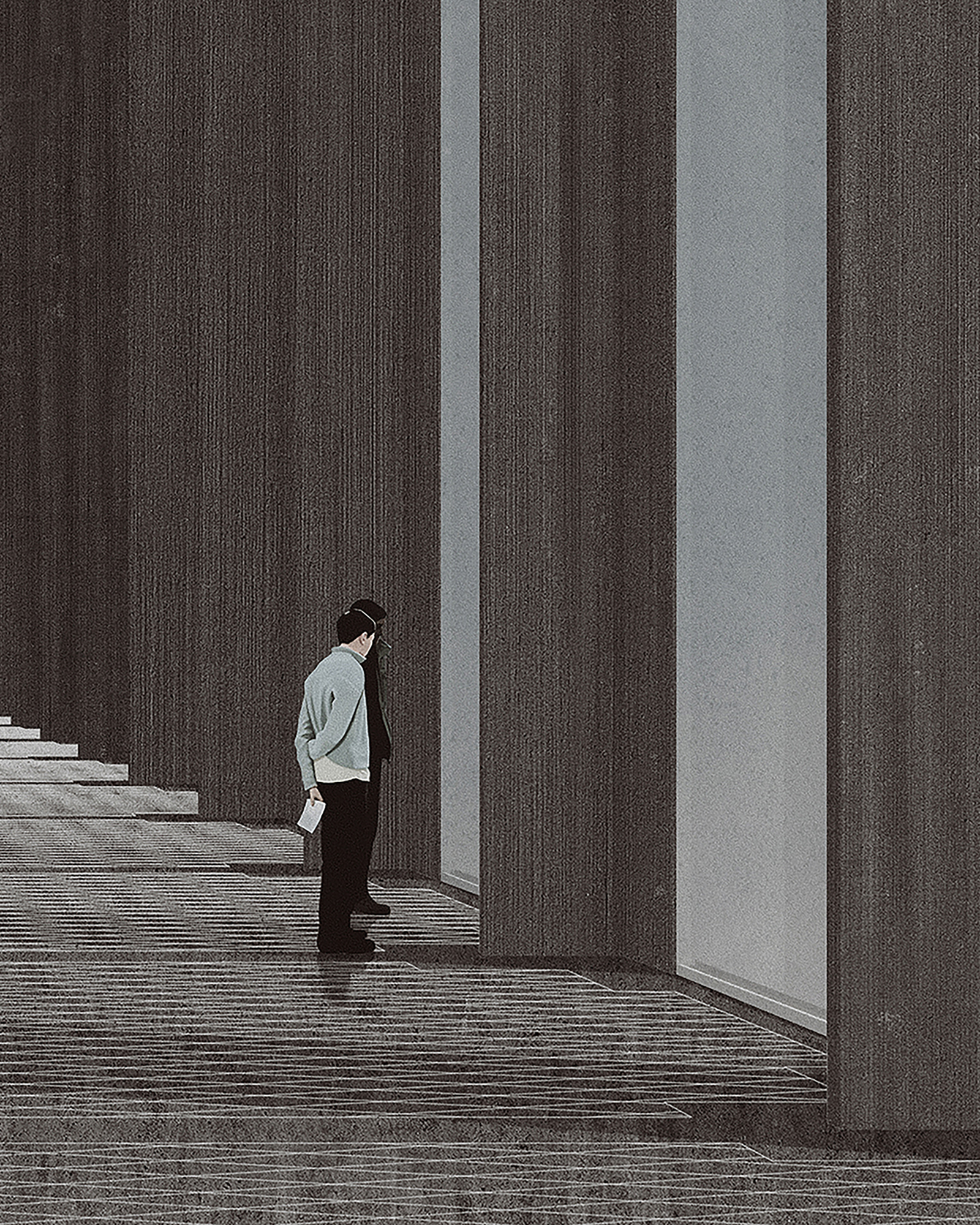
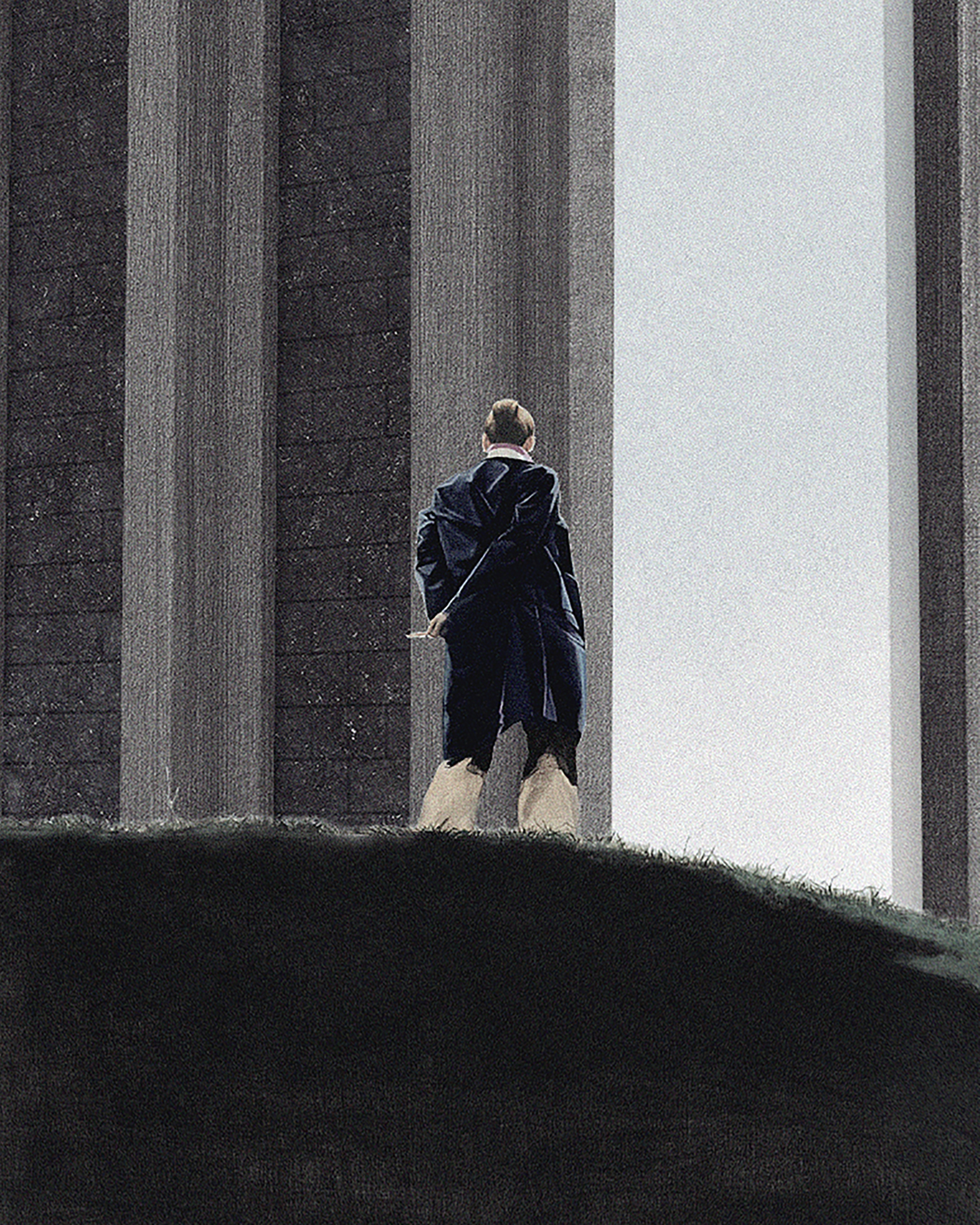
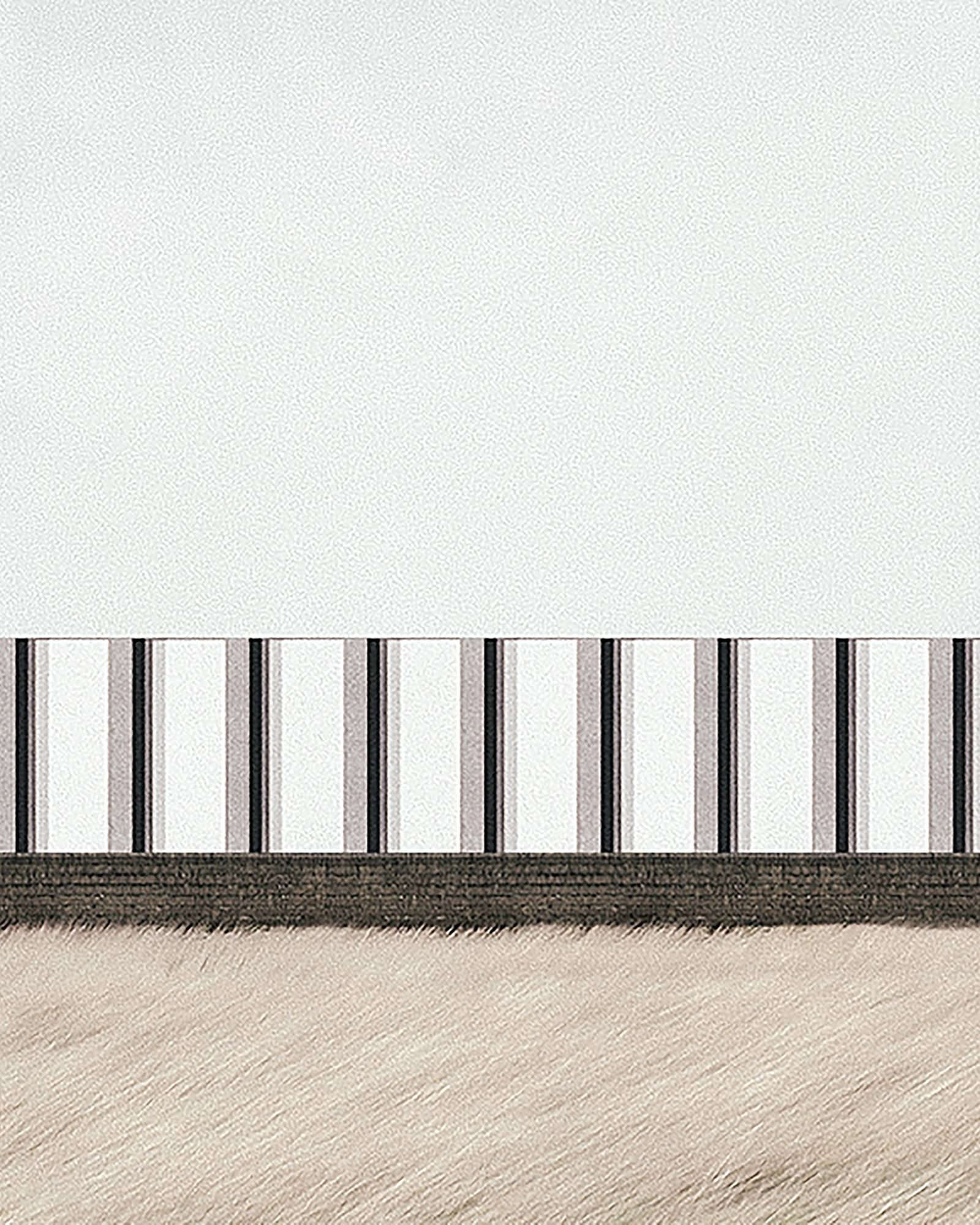
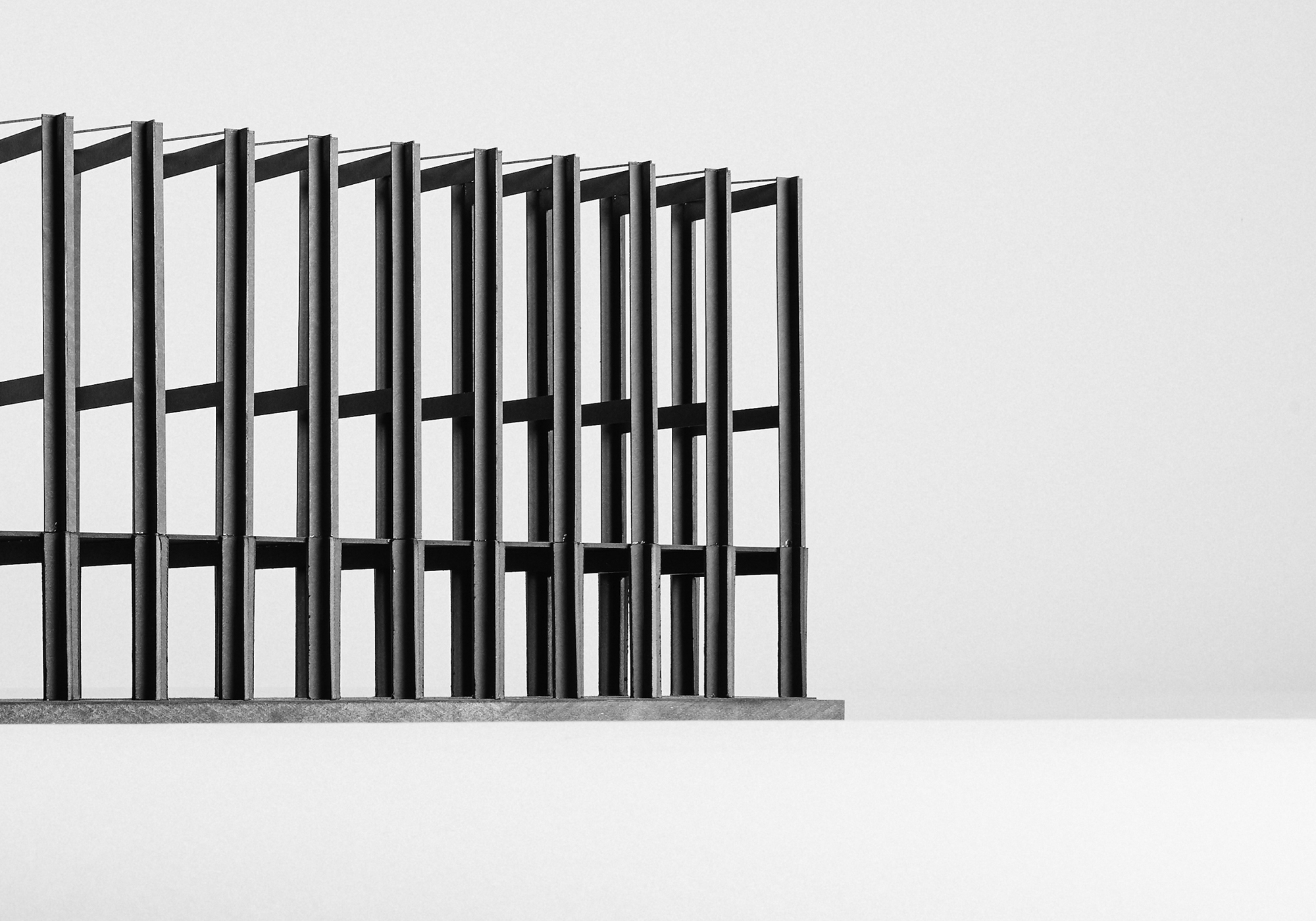
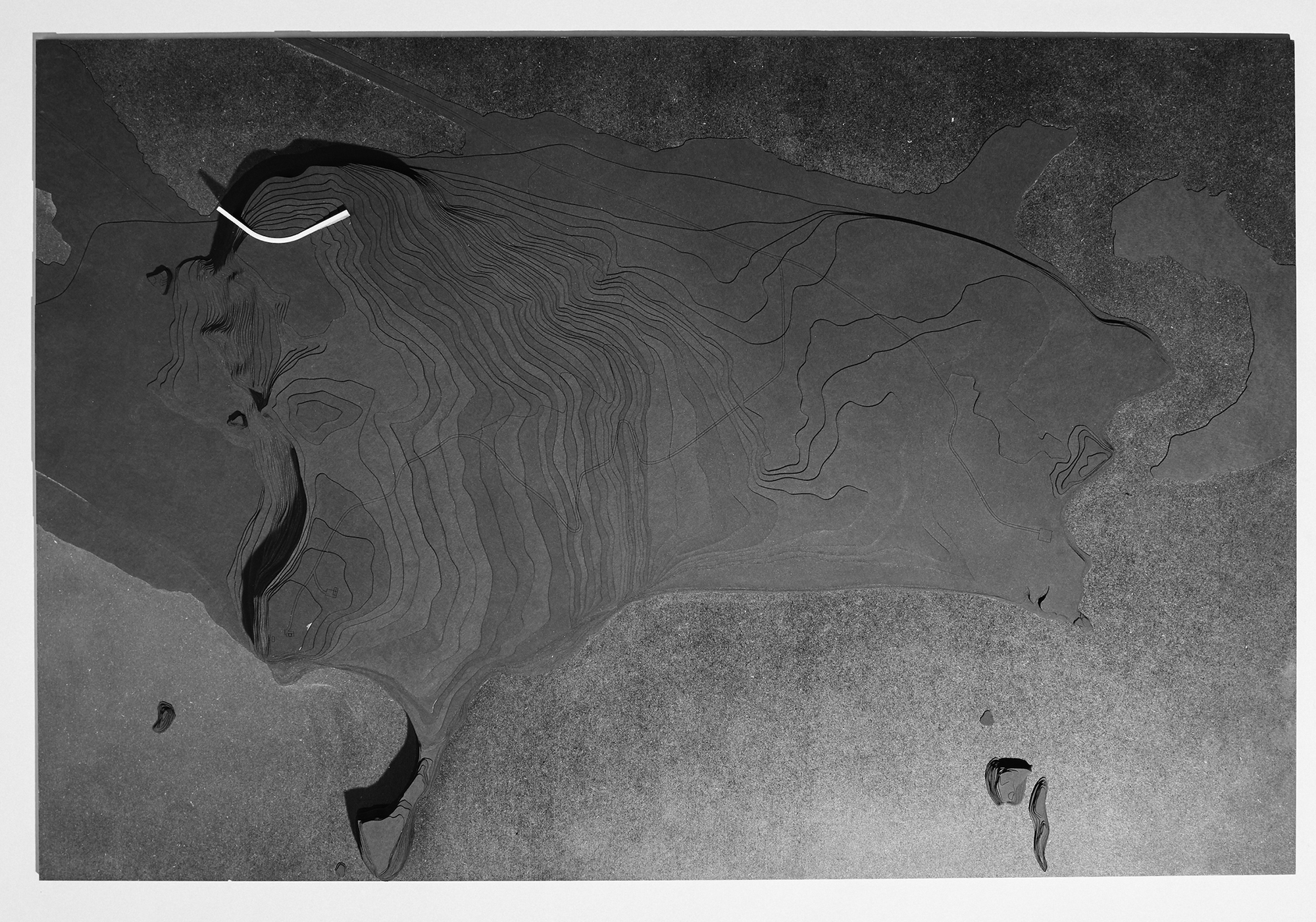
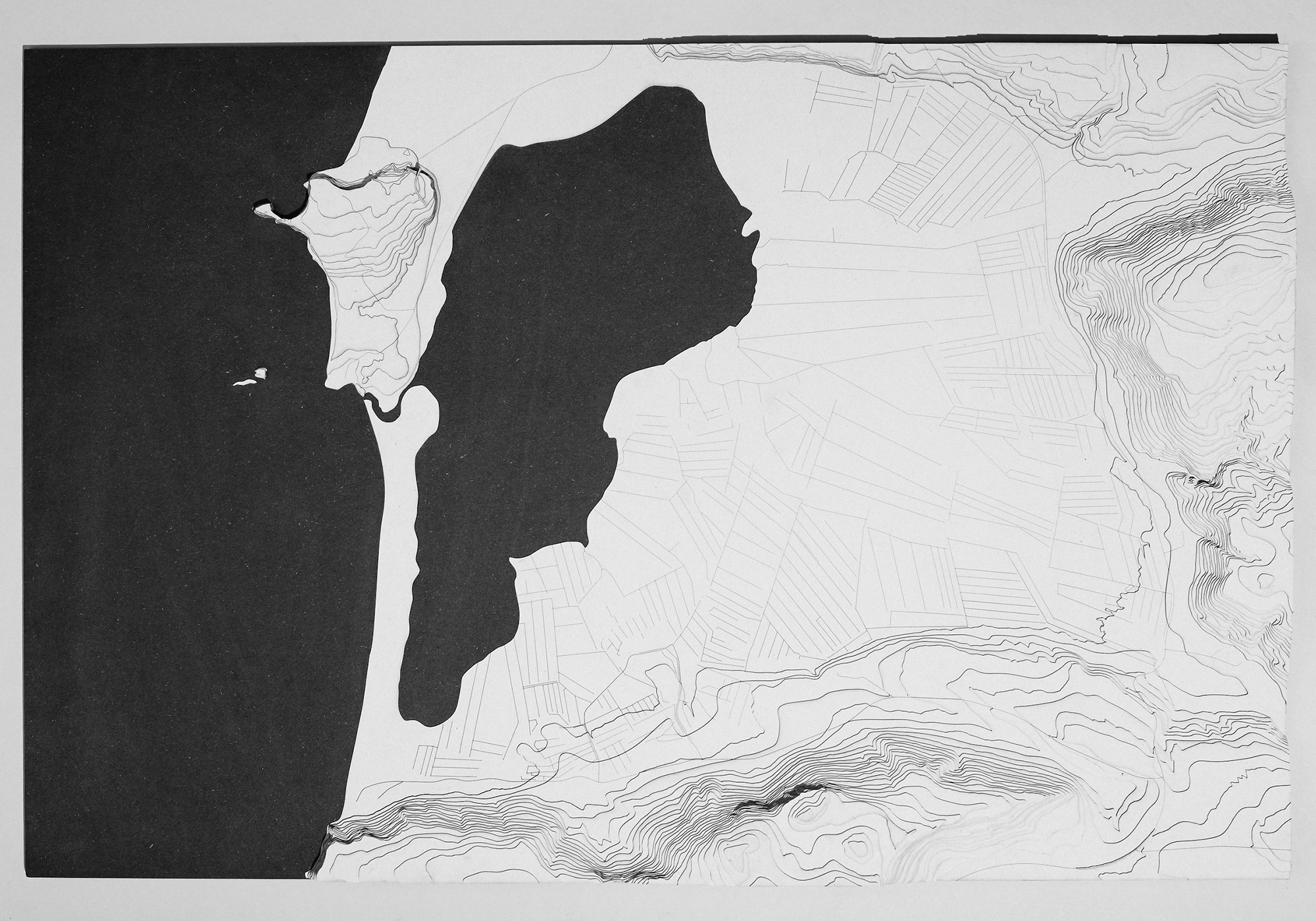
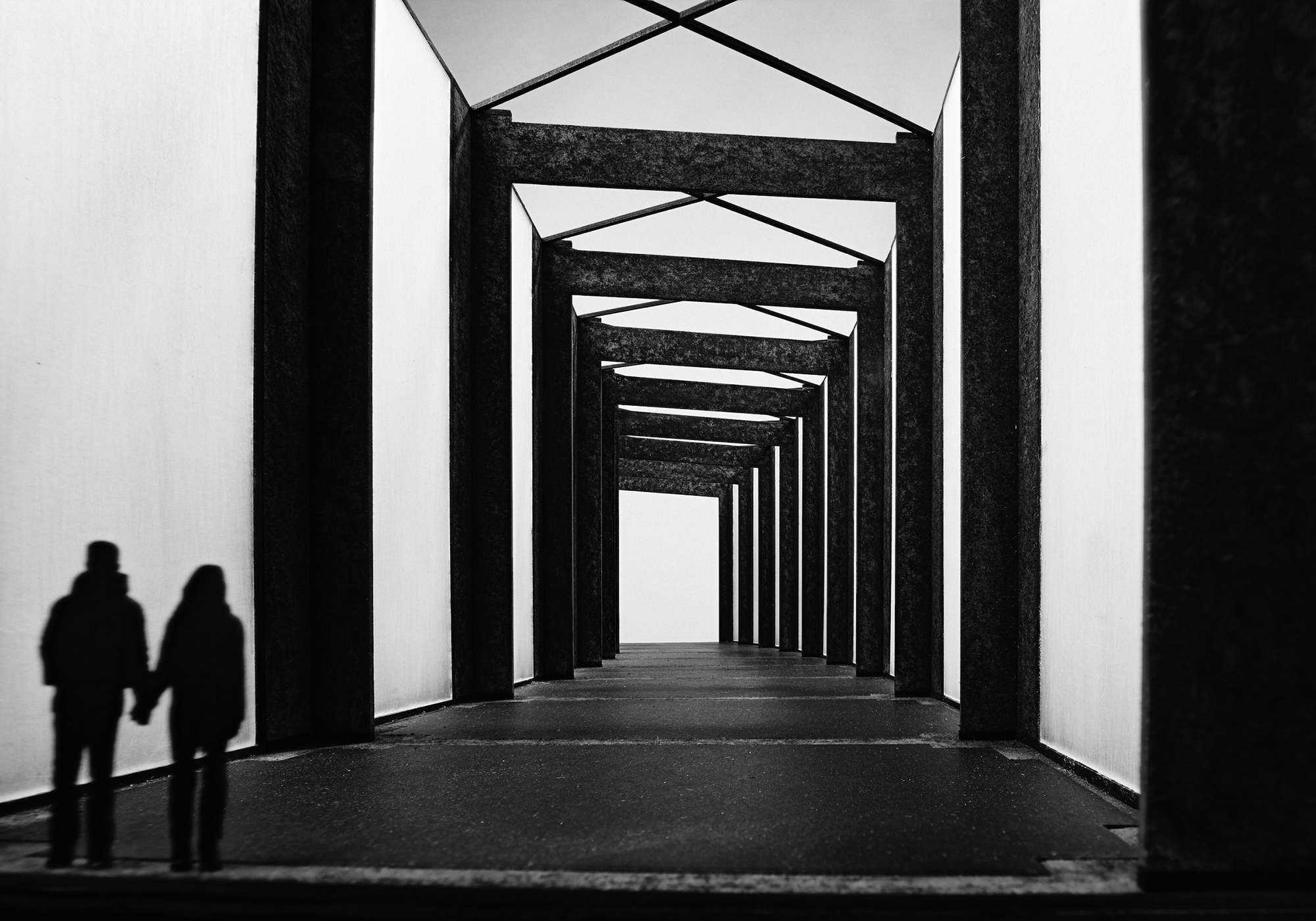

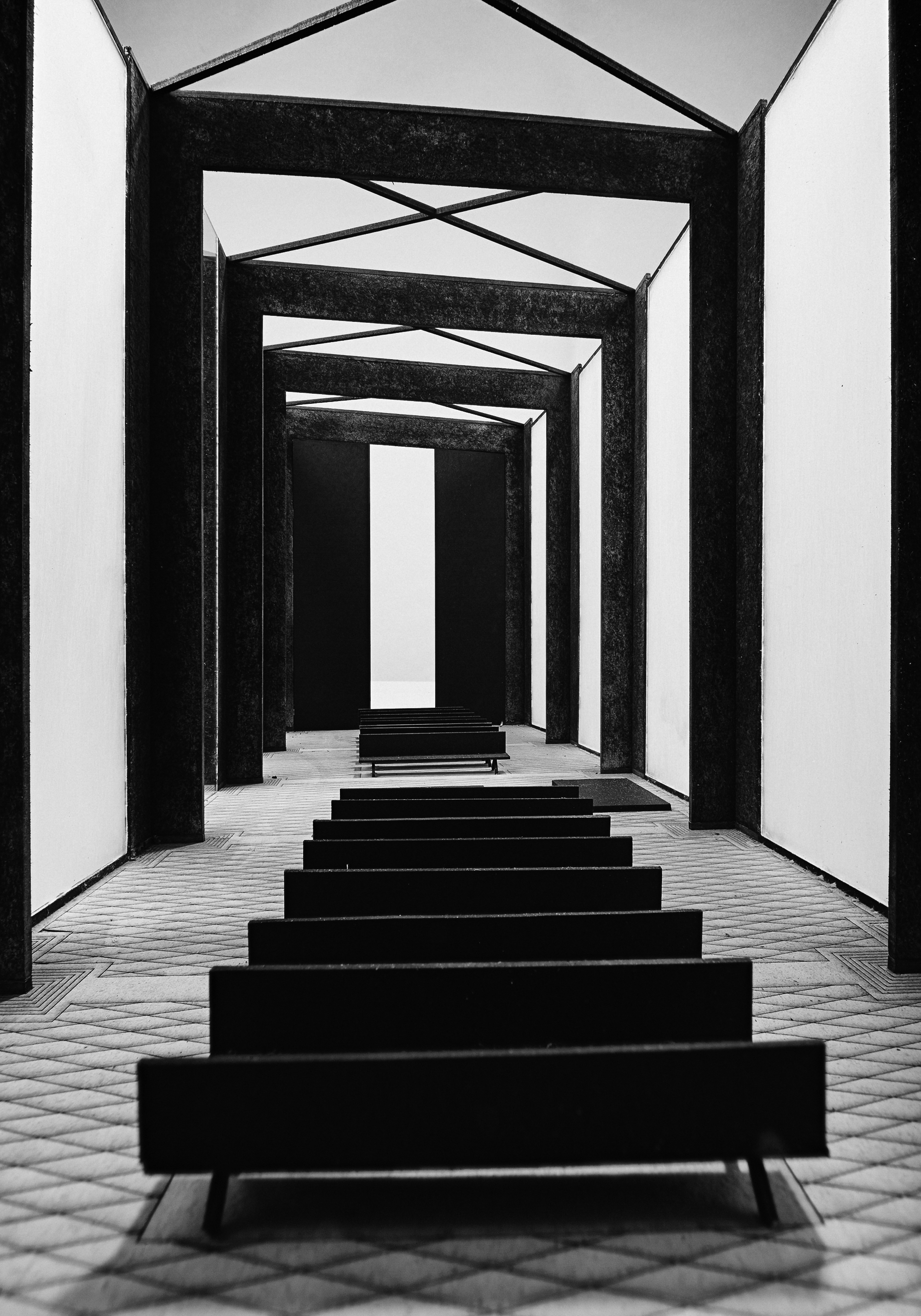
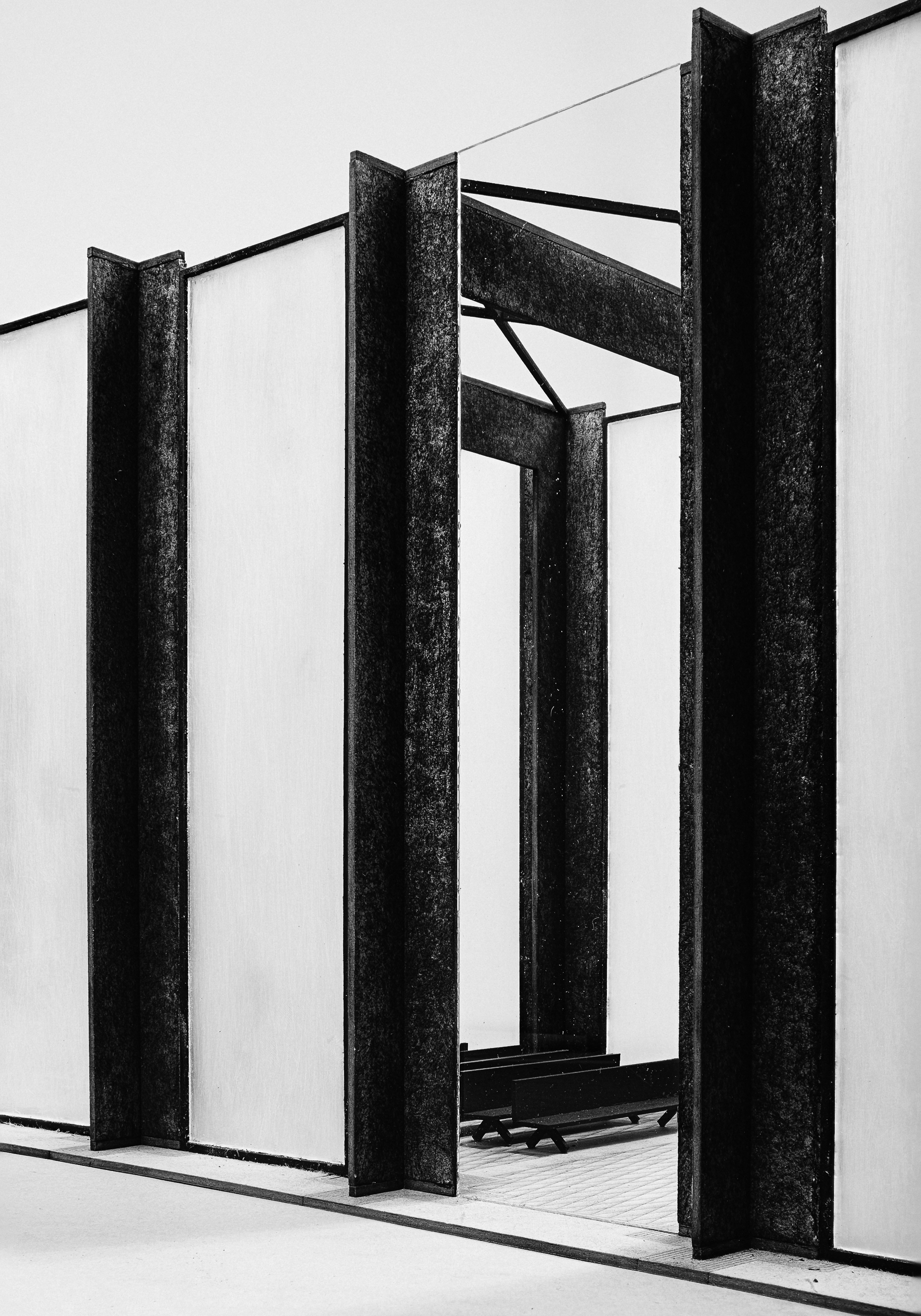
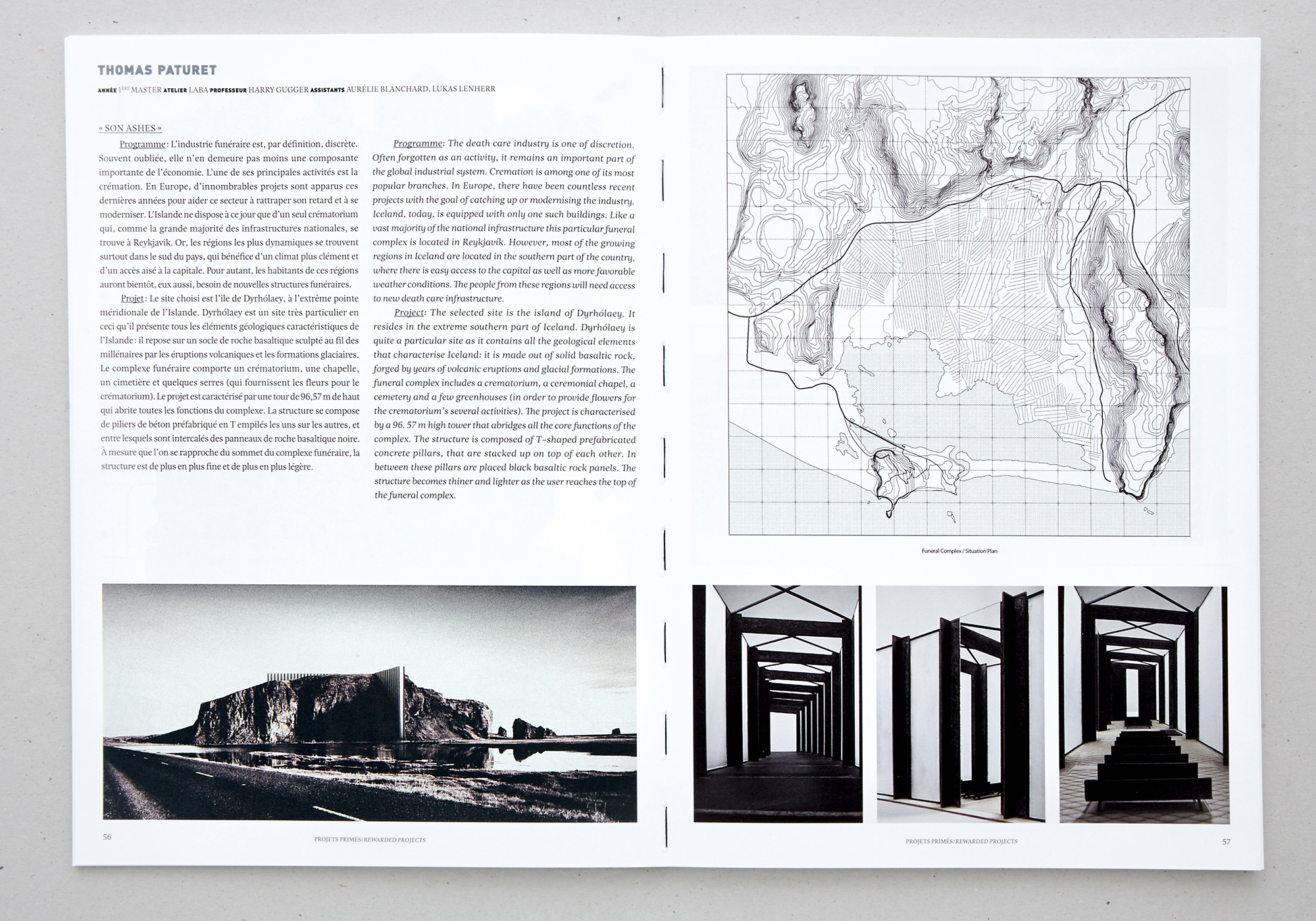
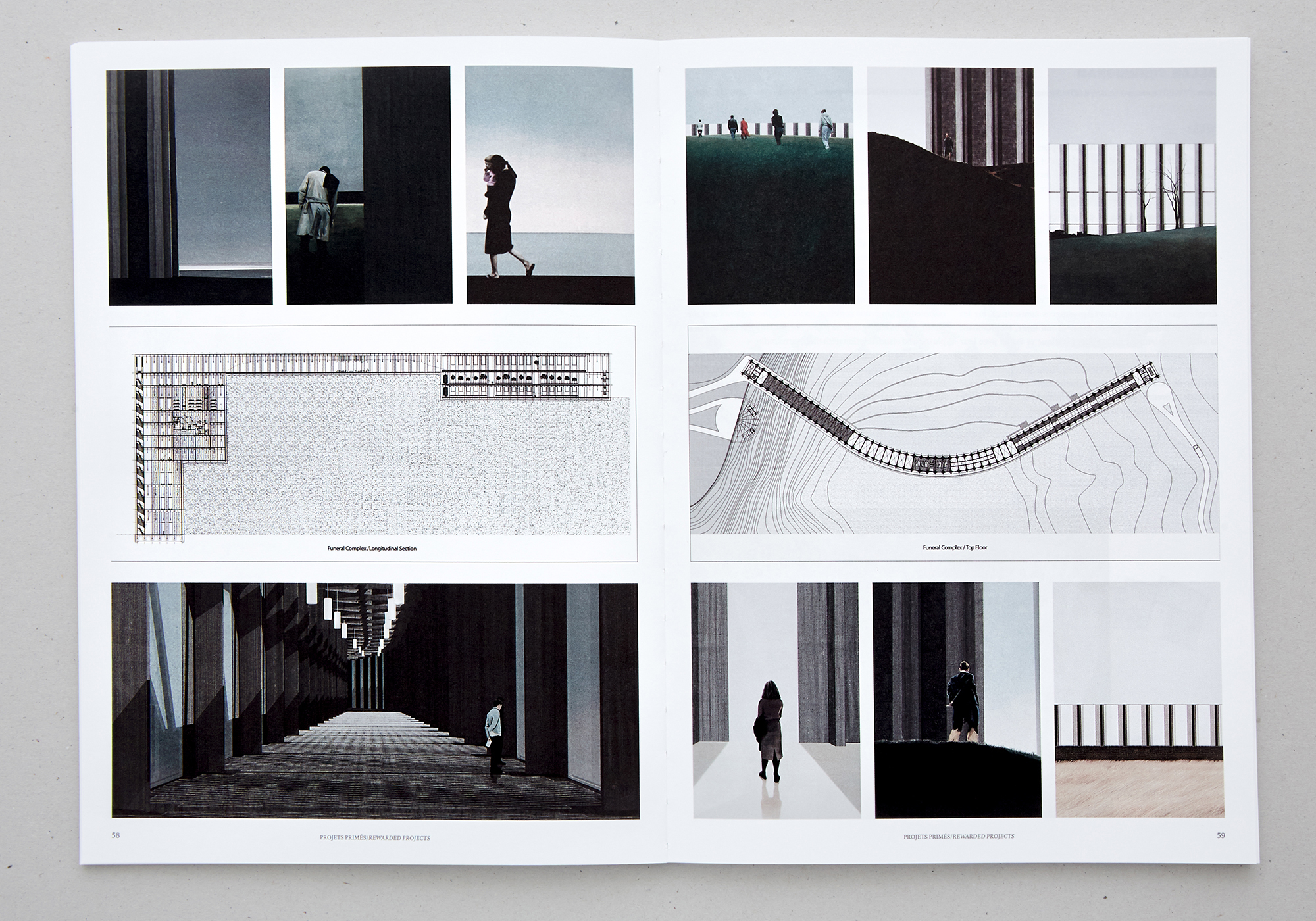
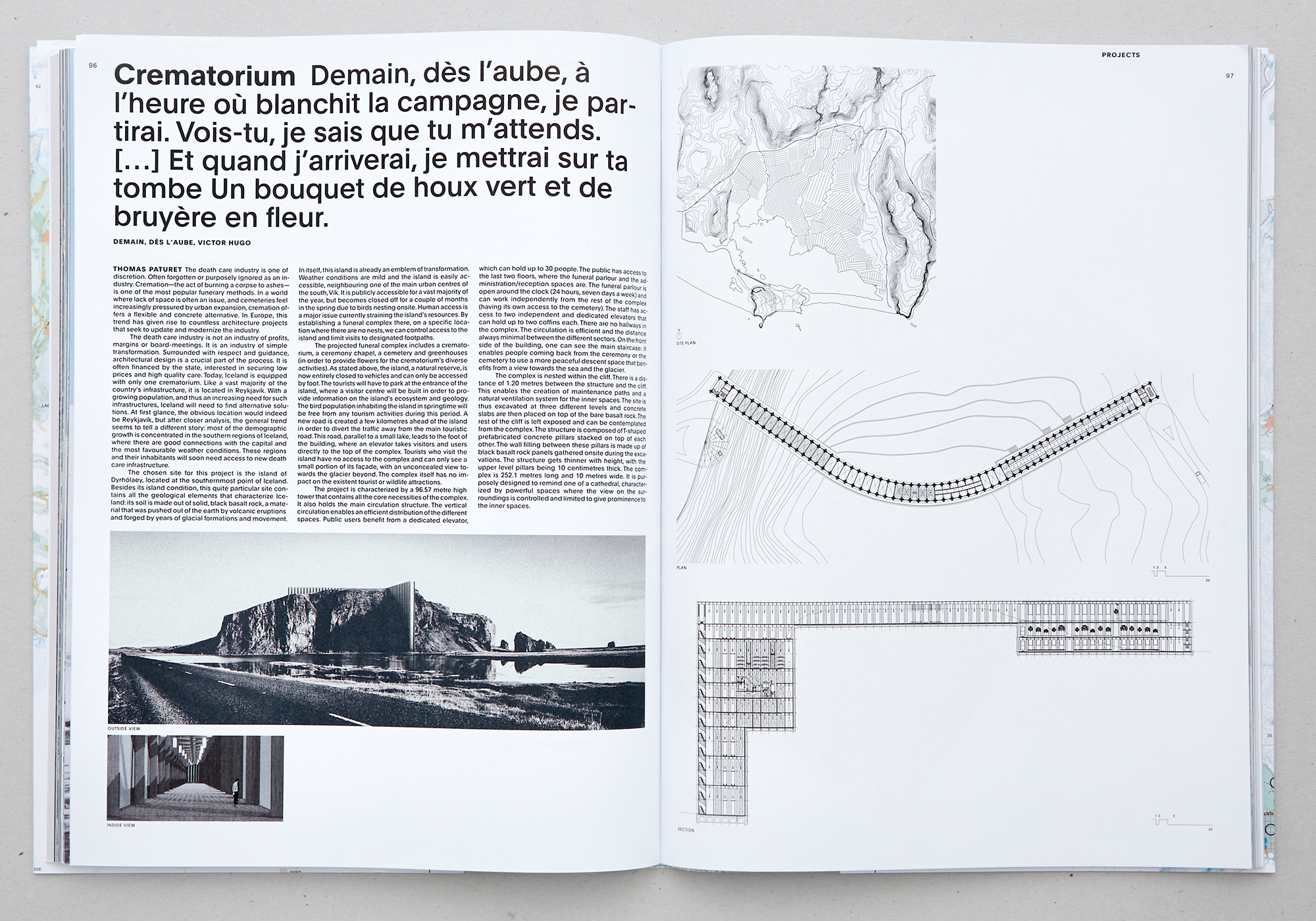
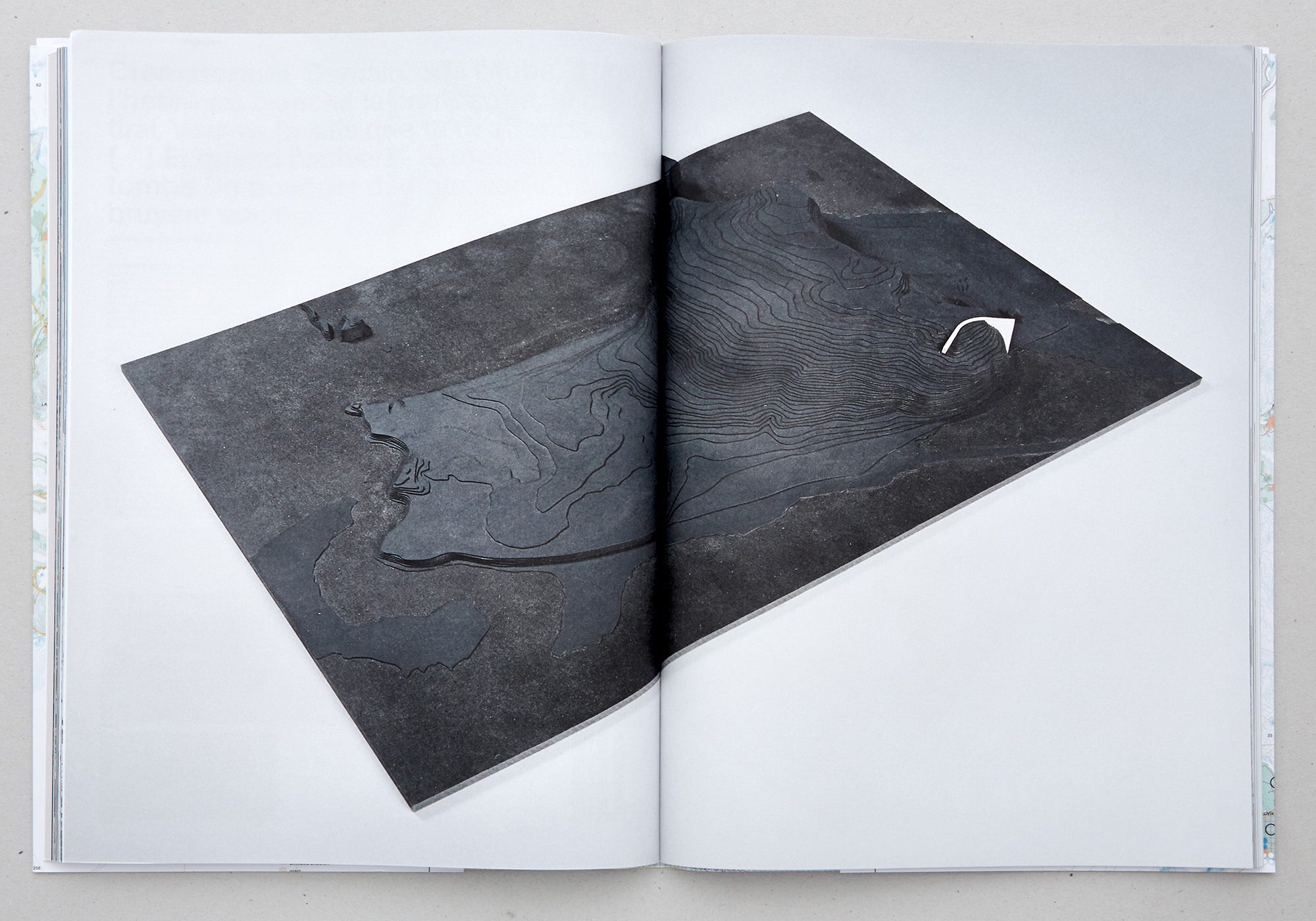
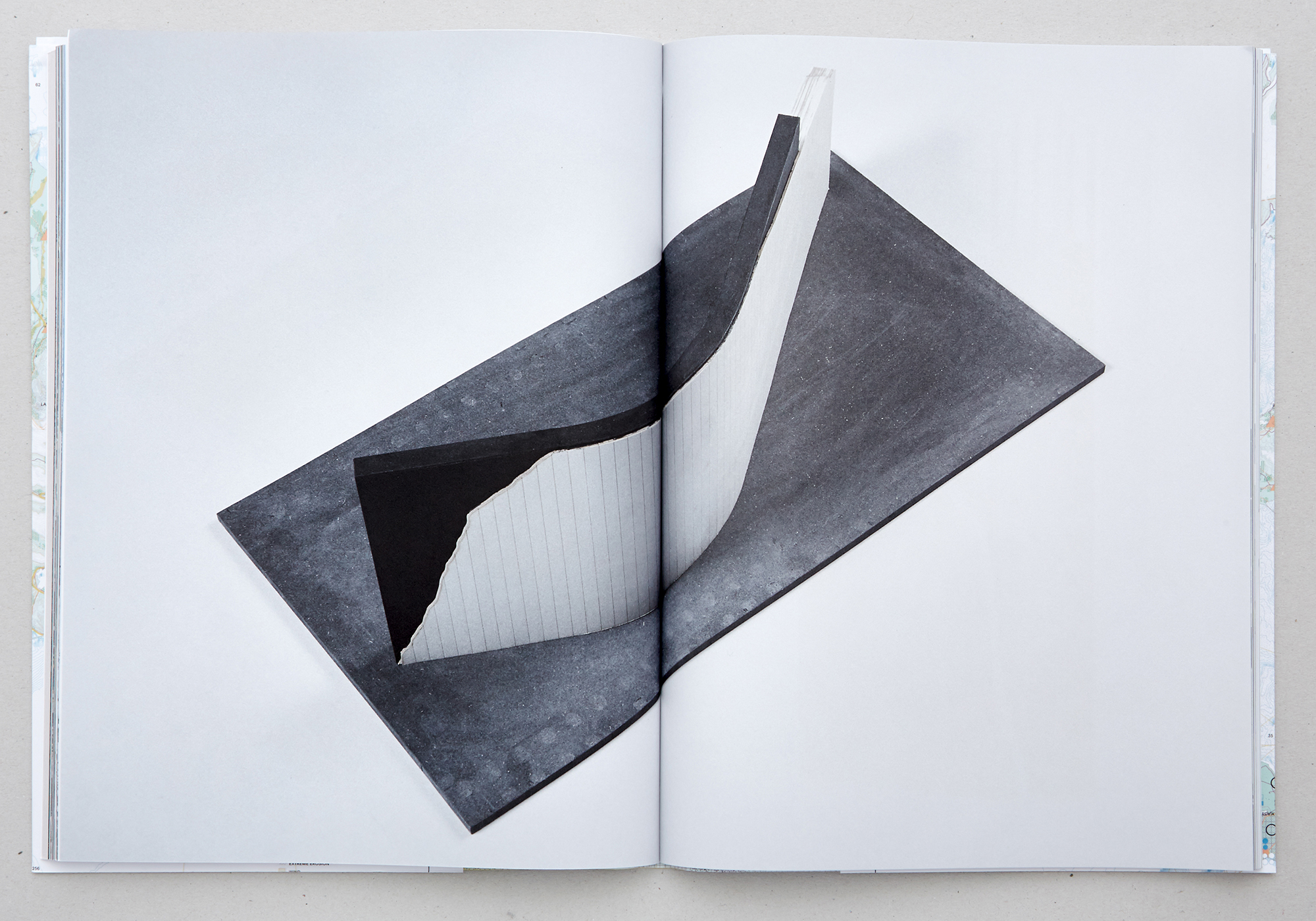
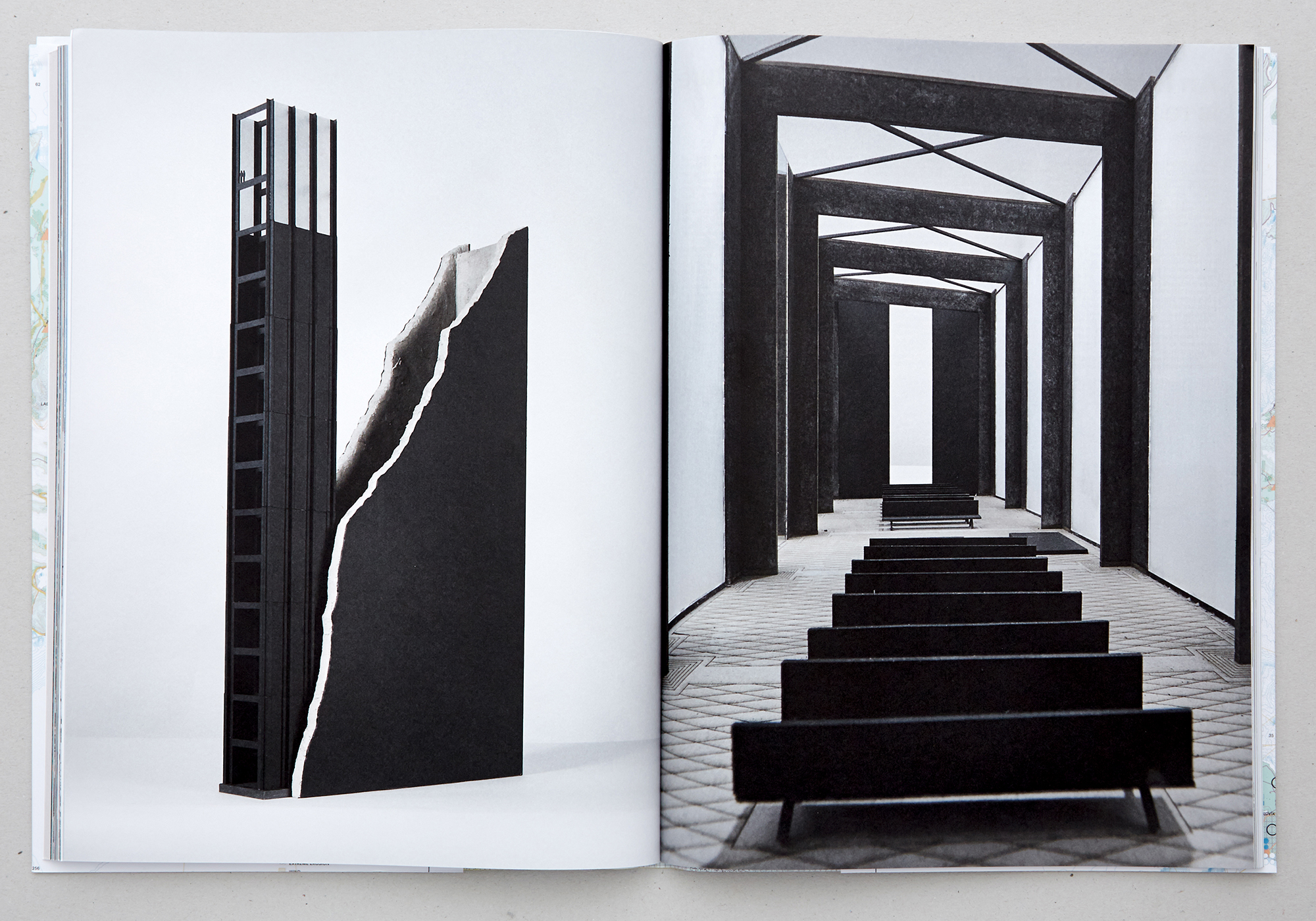
Lieu: Dyrhólaey, Iceland
University: École Polytechnique Fédérale de Lausanne
Semester: Master Project
Teaching: Harry Gugger - Lukas Lenherr
Model Photography: Florian Amoser
Book Photography: Douglas Mandry
Publié: Novembre 2015
Catégorie: Observation